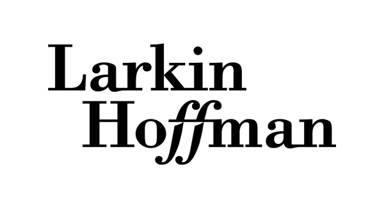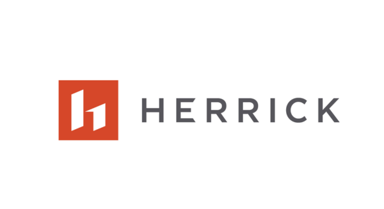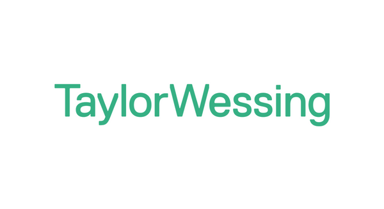DLA Piper implements BigHand Workflow Management task delegation and workflow technology as part of a back office support restructure, successfully increasing efficiencies and reducing the cost of delivering administrative services.
The legal market is undergoing the most significant change in a generation, one that requires law firms to fundamentally redefine operations. From the rise in competitive law firms specializing in the delivery of legal services rather than the practice of law, to the growing need for new metrics including Net Promoter Score rather than Profit Per Partner, the constitution and practice of law is undergoing extensive transformation.
Forward-looking firms see these changes coming – global law firm DLA Piper embarked upon a strategy to reduce costs and improve the efficiency of back-office services as far back as 2011. Janet Celly, Chief of Business Operations for DLA Piper, confirms,
“On the one hand the plan was simple economics: to reduce the cost of delivering administrative services. But looking at the company as a whole, it required far more finesse than just looking to cut costs: it required a new way to collaborate and build the administrative support staff of the future."
New Administrative Model
The traditional one-size-fits-all administrative service model predicated on a one-to-one relationship between lawyer and legal secretary was deemed to be no longer sustainable and one that certainly would not work five or ten years down the line. “With the changing needs of lawyers for support combined with the evolution of the role of administrative support staff, our model had to change as well. We needed to be able to satisfy the support needs of different categories of lawyers while also becoming more proficient, efficient, and less expensive. Finding better ways of facilitating firm-wide collaboration was key,” Celly explains.
In addition, the industry is facing a fundamental shift in demographics – it has become difficult to recruit for the generalist legal secretary role that has been the mainstay of administrative services as the next generation simply does not have the same skill set or the same workplace expectations.
As Celly confirms, “There is an evolution away from the traditional legal secretary both from a supply and a demand. We wanted to develop a structure that provided career progression as well as an in-house program to build the skills we have difficulty finding.” As such, the firm needs to find a way to tap into the expertise of soon to retire legal secretaries and achieve knowledge transfer with the next generation – something that would be difficult to achieve with the traditional siloed working model.
Creating a Team Structure
Having undertaken a robust data collection exercise, including time and motion studies, to understand the diversity of tasks undertaken across the organization, DLA Piper developed a shared resource model – replacing a single individual handling multiple tasks for one lawyer with multi-skilled, multi-level teams to support multiple lawyers. Celly explains, “One person can’t support ten people, but a team of five people can support 50.”
By moving away from traditional silos towards a team structure, DLA enabled senior administrators to focus on high-level tasks with more generic, repetitive work delegated to more junior, lower-cost resources. In addition, the new model created a foundation for knowledge sharing, ensuring the key skills of senior administrators would not be lost to the firm.
The new structure was initially supported by an internally developed tool, but it lacked the visibility required to support effective task delegation across teams and hence ensure the right task was going to the right level of resource at all times. Sonji Le Blanc, Senior Project Manager, DLA Piper, explains, "To enable staff to delegate tasks to appropriately skilled resources, DLA required an easy to use and more robust solution – a fluid, highly visual tool for users and one that provided management with a single view of all tasks at once on a dashboard."
Achieving Visibility and Control
Having reviewed the market, DLA Piper opted to implement the BigHand Workflow Management task delegation tool to deliver the highly visual Management Information required to effectively support the restructured administrative support functions. The solution was rolled out to all 28 US offices over a five-week period, a rapid deployment supported by a detailed communication and training plan, including webinars. Each office had either DLA or BigHand floor support to encourage adoption and usage, with a subject matter expert in each location.
Automated workflows were created to support the delegation of work from more highly experienced, senior staff to more junior teams, helping the firm to achieve better use of skilled resources and more efficient use of all resources, while also providing management with full visibility of each teams’ folders to track tasks and support work sharing.
The immediate, cross-office visibility of tasks also means that individuals who have traditionally worked in silos are now exposed to a raft of different activities, raising awareness of different skill requirements across the firm. Norma Spearman, Chief Legal Support Officer at DLA Piper, says, “Junior secretaries now have visibility of a whole dashboard of tasks – if these include something they have not done before, they can request training to increase their skill sets and really enjoy what they are doing, which will have an impact on retention.
This latter point is key. As Le Blanc, an active member of the Association of Legal Administrators, confirms,
“Growing numbers of firms are moving towards this collaborative approach and they want to know what we’re achieving with BigHand Workflow Management. The ability to share work across teams and across offices is fundamental to the way we are able to retain, grow and deliver better job satisfaction, not to mention providing better service more economically over longer hours of the day for our fee earners."
Efficiency, Reduced Costs and Improved Retention
This was a significant culture shift for DLA, but adoption was swift; over 8,000 tasks a month are now tracked within BigHand Workflow Management and the proportion of work carried out by lower-level staff has more than doubled within six months. Moreover, as the roll-out of BigHand Workflow Management expands, both internally and across the wider business to include DLA’s outsourced agency and its Tampa business center, this is expected to increase further.
For timekeepers, effective task management and better collaboration across the business ensures fast turnaround – a shift that has been particularly valuable for associates and junior associates who traditionally had to wait for secretaries to finish the work of senior lawyer. Ensuring that individuals with the relevant skills can pick up and complete the work to a high standard, in a timely fashion is having a positive impact on both associates and client satisfaction,” Le Blanc explains.
Support staff value the opportunity to collaborate, from entering tasks on behalf of a lawyer and effectively delegating work to another resource team, to the chance to actively choose which tasks they would prefer to undertake. Managers are able to improve resource utilization and ensure that individuals are delegating appropriately. As a result, the firm has significantly reduced secretarial over-time, further reducing costs.
The data BigHand Workflow Management provides is helping DLA gain insight into task delegation and responsibility, which is already helping to shape – and evolve - the firm’s administrative service model for the future. In addition to directing the knowledge transfer required as senior administrators retire, it is also informing the recruitment strategy - when additional resources are required, it is far easier to identify the level of individual needed based on task profile, which has enabled the firm to avoid recruiting highly experienced higher-priced administrators when less experienced staff are needed. As Celly explains,
“DLA is now creating the next generation resource by hiring educated individuals with the right skills who lack legal expertise and pairing them with more senior individuals to provide that knowledge transfer and on-the-job training. It’s a model based on continuous learning and evolution.”
Conclusion
DLA’s objective was to create a robust, collaborative operation that ensures the right job is placed with the right person at the right time to better service timekeepers and leverage the value and skills of existing staff, while creating a collaborative administrative model to support the new practice of law.
As Spearman concludes, “The bi-product has been cost reduction achieved as a result of allocating tasks to lower level, lower-cost resources and the ability to proactively manage staff to improve their skillsets and enhance job satisfaction. BigHand Workflow Management has unlocked an ongoing project that will continuously deliver






